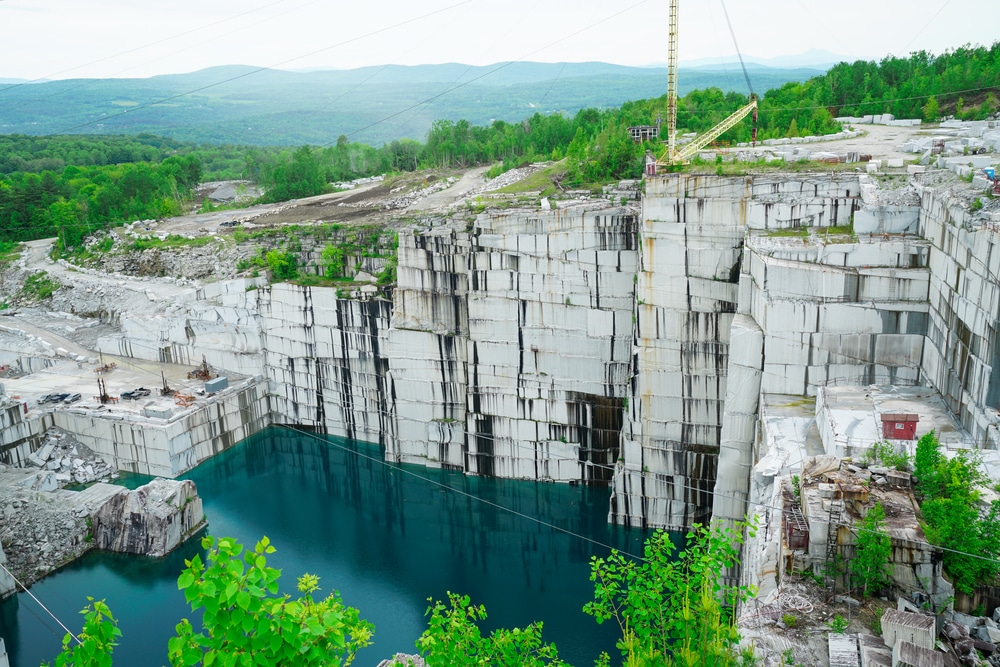Discovering Granite Quarries in South Africa: A Comprehensive Guide
Discovering Granite Quarries in South Africa: A Comprehensive Guide
Blog Article
Unearthing the Rich History and Sustainable Practices of Granite Quarrying
As we base on the precipice of revealing the detailed tapestry of granite quarrying, a journey with time discloses not just the physical act of removing stone yet also the social and historic importance woven right into the very material of this practice. From the ancient beginnings that laid the structure for modern quarrying methods to the lasting practices that are shaping the future of this market, each chisel mark on granite surface areas tells a tale waiting to be uncovered (granite quarries in south africa). The tradition of granite quarrying extends far past simple removal; it is a testament to human resourcefulness, durability, and the enduring attraction of this marvelous stone
Ancient Origins of Granite Quarrying
Dating back to old civilizations, the method of quarrying granite has actually been an integral part of human history and architectural improvement. The earliest proof of granite quarrying dates back to ancient Egypt, where enormous pyramids and complex sculptures were crafted from this sturdy rock. The Egyptians utilized primitive tools to extract granite blocks from quarries, showcasing the significance of this material in their significant buildings.
Moving on in background, the Greeks additionally made substantial payments to the quarrying of granite. The Greeks used granite in different architectural marvels, such as temples and statues, showing their skill in shaping and sculpting this sturdy rock. The Romans even more refined the techniques of quarrying granite, using sophisticated tools like blades and hammers to extract and form granite for their renowned structures.
Through the centuries, the technique of quarrying granite has actually advanced, with modern-day innovations boosting performance while preserving the ageless charm of this all-natural stone - granite quarries in south africa. From ancient people to contemporary contractors, the legacy of granite quarrying remains to shape our globe
Evolution of Quarrying Methods
The advancement of quarrying techniques has been marked by a continuous development in the direction of greater efficiency and precision in extracting granite. From the basic approaches utilized by our ancestors to the innovative technologies utilized in modern-day quarrying operations, the sector has undergone significant advancements. Early quarrying strategies included hand-operated labor with fundamental tools such as chisels, hammers, and wedges to remove granite blocks from the earth. As civilizations advanced, techniques like fire-setting and primitive dynamites were introduced to facilitate the extraction procedure.
In more recent times, the arrival of machinery reinvented the quarrying sector, making it possible for quicker extraction rates and raised productivity. Technologies such as diamond cord saws, high-pressure water jets, and pneumatic drills have come to be standard in contemporary quarries, enabling accurate cutting and lowered waste. Additionally, improvements in computer-controlled tools and 3D modeling have enhanced quarrying operations, causing marginal ecological impact and improved sustainability methods. As the need for granite proceeds to rise, the development of quarrying strategies remains indispensable to meeting market requires successfully and sustainably.
Social Relevance of Granite
Granite holds an extensive cultural value throughout numerous people because of its enduring presence in architectural masterpieces and revered monoliths. From the majestic pyramids of Egypt to the detailed makings of the Angkor Wat holy place in Cambodia, granite has actually been a material of choice for sharing magnificence and durability in cultural heritage. In ancient Rome, granite columns adorned holy places and public buildings, symbolizing toughness and permanence. The social relevance of granite extends past its physical qualities; it symbolizes resilience, stability, and timelessness, making it an icon of withstanding legacies and practices.

Lasting Practices in Quarrying
Amidst the abundant history of granite quarrying and its social significance exists a growing emphasis on lasting practices within the sector. As ecological understanding and issues about source depletion have actually heightened internationally, the quarrying industry has significantly embraced lasting methods to decrease its influence on the atmosphere and bordering neighborhoods.

Moreover, improvement and recovery of quarry websites post-extraction are important to lasting methods. By bring back quarried areas to a natural or advantageous state, such as producing wildlife habitats or entertainment rooms, quarriers can counter the ecological footprint of their operations and contribute favorably to the neighborhood ecological community.
Tradition of Granite Quarrying
With a historical backdrop steeped in workmanship and commercial development, what enduring impact has granite quarrying left on the landscape of modern-day culture? The tradition of granite quarrying transcends plain removal methods; it has formed architectural marvels, urban landscapes, and social heritage worldwide. The resilient nature of granite has made it a recommended option for monuments, buildings, and framework, standing as a testament to the ability and creativity of quarry workers throughout generations.
Furthermore, the financial impact of granite quarrying can not be ignored. The industry remains to offer employment possibility and drive neighborhood economic situations in areas where granite removal is common. It has actually additionally stimulated technical improvements in quarrying methods and devices, bring about extra effective and lasting practices.
In regards to sustainability, the heritage of granite quarrying includes efforts to minimize ecological effects via improvement jobs and liable resource management. By stabilizing economic interests with environmental stewardship, the sector makes every effort to guarantee that future generations can continue to profit from this long-lasting natural resource.
Final Thought

Report this page